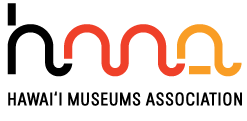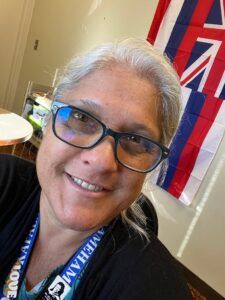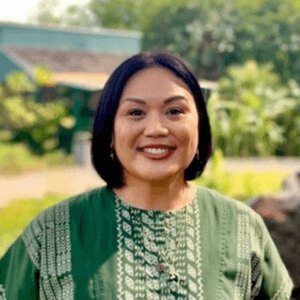
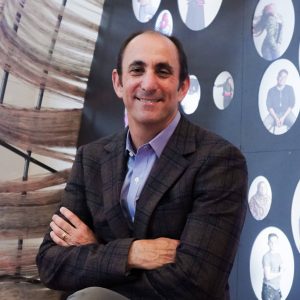
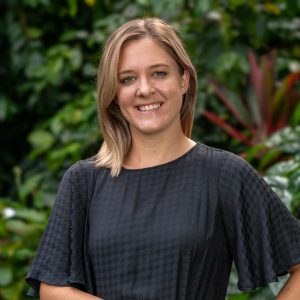
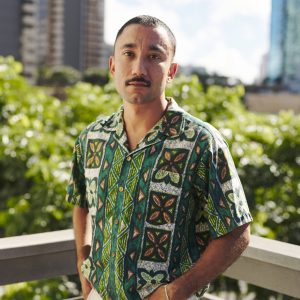
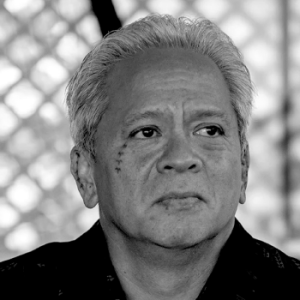
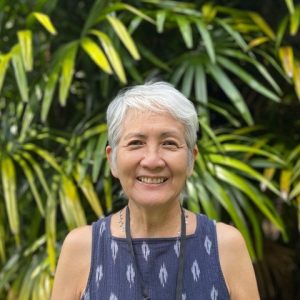
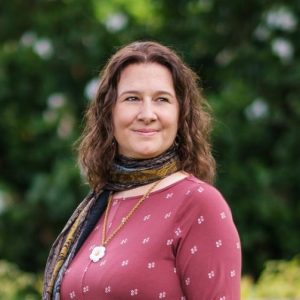
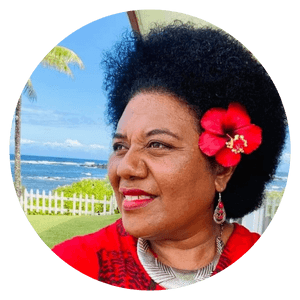
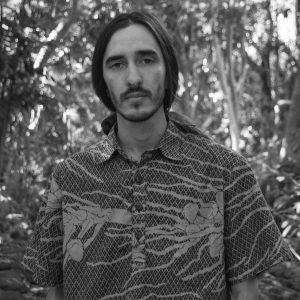
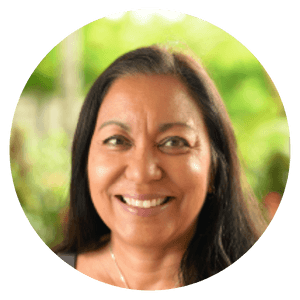
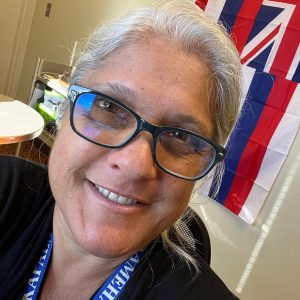
Ayau, Edward Halealoha · Broderick, Drew Kahuʻāina · Chang, Taylour · du Preez, Kamalu · Kahanu, Noelle · Kosasa, Karen · Parzen, Micah ·
Preza, Shelly · Raymond, Ashley · Reyes, Kuʻuleilani · Reynolds, Annie · Tengan, Josh · Vundilo, Tarisi · Wong Smith, Helen ·
POWER UP: MUSEUM MOMENTUM IN 2023
Oʻahu (East-West Center, Honolulu, Hawaiʻi)
DECOLONIZATION-INDIGENIZATION-COLLABORATION
Saturday, March 25, 2023 from 8:15 am – 6:00 pm
Hawaiʻi Museums Association (HMA) invites you to the fourth installment of our progressive conference series, POWER UP: Museum Momentum in 2023. HMA is delighted to have this opportunity to partner with the University of Hawaiʻi at Mānoa Museum Studies Graduate Certificate Program and East-West Center Arts Program, with support from the Hawaiʻi Community Foundation.
The theme selected for this one-day conference is Decolonization – Indigenization – Collaboration. Join us in Oʻahu on Saturday, March 25 as we gather in person for this critical program at East-West Center’s Imin Conference Center. We will be hearing from leaders in our field who will present important initiatives around the practice of decolonization, indigenization, and collaboration at their institutions.
This will be a hybrid event, in-person and via ZOOM.
Conference fees are $45/HMA Members; $65/Non-Members; and FREE for students with HMA Student Membership ($20), and will include lunch and closing reception.
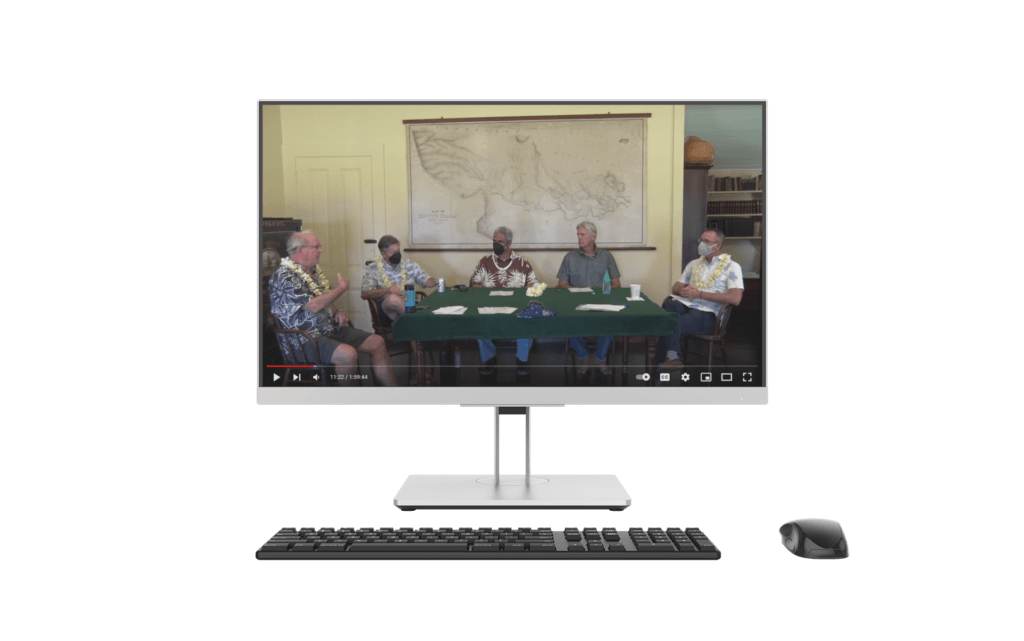
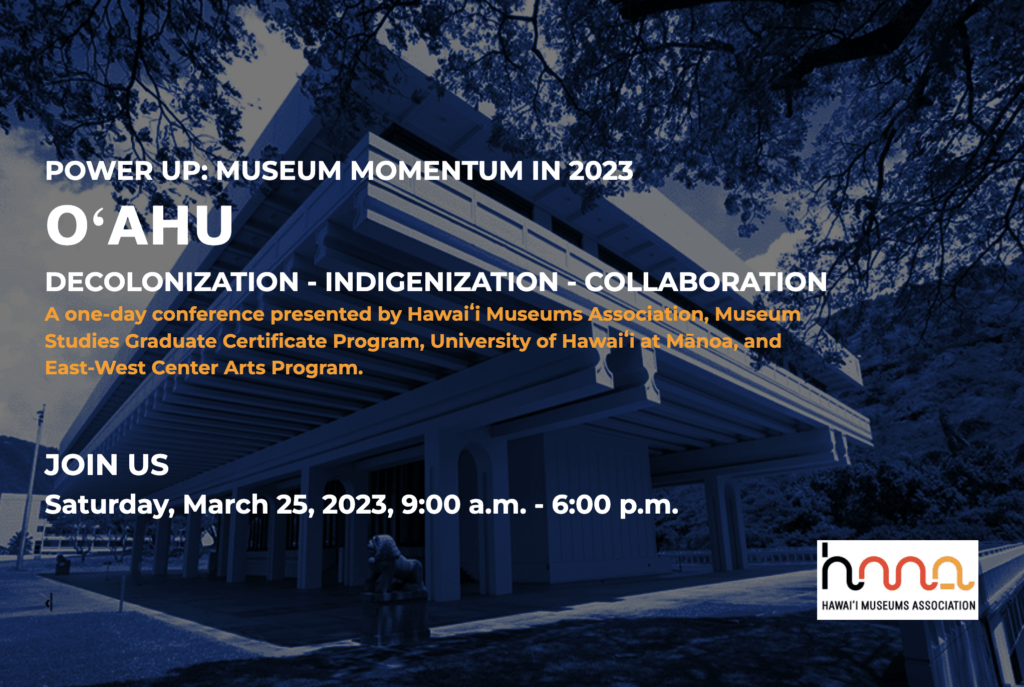
Program Schedule
Registration, Coffee, and Networking
Opening Remarks by Lisa Solomine, President, Hawaiʻi Museums Association
Keynote Presentation by Micah Parzen, CEO, Museum of US, San Diego, California
Presenters
Tarisi Vunidilo, Assistant Professor in Anthropology, University of Hawaiʻi – Hilo; Secretary-General, Pacific Islands Museums Association
Taylour Chang, Director of Public Programs and Community Engagement, Bishop Museum, with Kamalu du Preez, Cultural Resource Specialist, Bishop Museum
Drew K. Broderick, Noelle Kahanu, and Josh Tengan: ʻAi Pōhaku, Stone Eaters – Exhibitions of Contemporary Hawaiian Art
Moderator: Karen Kosasa
Q&A
Presenters
Ashley Raymond, Interim Executive Director, Donkey Mill Art Center, Hōlualoa, Hawaiʻi
Shelly Preza, Executive Director, Lānaʻi Culture & Heritage Center, Lānaʻi
Kanani Daley, Kanaka ‘Ōiwi Curator, East Hawaiʻi Cultural Center, Hilo, Hawaiʻi
Jonathan Clark, Assistant Director, Schaefer Gallery, Maui Arts & Cultural Center, Maui, Hawaiʻi,
Moderator: Jonathan Clark
Q&A
Enjoy!
Presenters
Noelle Kahanu, member of planning team from the UH Museum Studies Graduate Certificate Program
Karen Kosasa, member of planning team from the UH Museum Studies Graduate Certificate Program
Annie Reynolds, member of planning team from the East-West Center Arts Program
Kuʻuleilani Reyes, member of 2022 NHPIMI cohort, Hawaiʻi Pacific Collection Librarian at Kamehameha Schools Kapalama Campus
Q&A
Presenters
Edward Halealoha Ayau (via ZOOM): 30 Years of Repatriation
Helen Wong-Smith, Archivist for University Records at the University of Hawaiʻi at Mānoa
Moderator: Lisa Solomine
Q&A
Lisa Solomine, President, Hawaiʻi Museums Association
Join us at The Art Gallery, University of Hawaiʻi at Mānoa for the conference closing reception and curator-lead tours through the
gallery spaces of ʻAi Pōhaku, Stone Eaters with Drew K. Broderick, Noelle Kahanu, and Josh Tengan
Presenter Bios
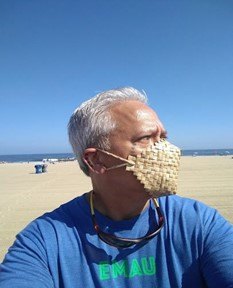 I am a 59-year old ‘Ōiwi (Hawaiian) father of 4 daughters and a son, was raised in Ho‘olehua, Molokai on Hawaiian homestead land and graduated Kamehameha Schools 1982, the University of Redlands in 1987 and earned a law degree from the University of Colorado in 1989 where I clerked for the Native American Rights Fund. My parents are Merle Moanikeala Ka‘eo and Reynolds Leialoha Ayau, and I have 7 siblings.
I am a 59-year old ‘Ōiwi (Hawaiian) father of 4 daughters and a son, was raised in Ho‘olehua, Molokai on Hawaiian homestead land and graduated Kamehameha Schools 1982, the University of Redlands in 1987 and earned a law degree from the University of Colorado in 1989 where I clerked for the Native American Rights Fund. My parents are Merle Moanikeala Ka‘eo and Reynolds Leialoha Ayau, and I have 7 siblings.
I worked for US Senator Daniel Inouye including service on the Senate Indian Affairs Committee where I worked on
legislation that became the National Museum of the American Indian Act and the Native American Graves Protection and Repatriation Act. In addition, I was the first manager of the Burial Sites Program at the State of Hawai‘i Historic Preservation Division that formally established the island burial councils and was the principal drafter of Hawai‘i Administrative Rules Chapter 13-300 on Human Remains and Burial Sites.
I’ve led efforts to advocate for and repatriate iwi kūpuna (ancestral Hawaiian skeletal remains), moepū (funerary possessions) and mea kapu (sacred objects) over the past 32 years as the Executive Director of Hui Mālama I Nā Kūpuna O Hawai‘i Nei (Group Caring for the Ancestors of Hawai‘i). Founded by traditional cultural practitioners Edward and Pualani Kanahele of Hilo, we were trained to conduct ceremonial protocols to care for disturbed ancestors. We repatriated and reburied over 6,100 iwi and items from museums in Hawai‘i, the United States, Canada, Australia, Switzerland, Sweden, England, Germany, Austria and Scotland starting in 1990, before formally dissolving in 2015. We have conducted 128 national and international repatriations (see attachment). See also, https://kawaiola.news/mauliola/bringing-our-ohana-home/.
I also volunteer for an international repatriation network known as Return, Reconcile, Renew out of the Australian National University in Canberra where Australian Aborigines, Maori, Native Americans, Native Hawaiian, Ainu and other indigenous folks work to research, support and conduct the repatriation and reburial of ancestral remains, funerary possessions, sacred objects and cultural patrimony. I continue to work on international repatriation as a committed volunteer for Hui Iwi Kuamo‘o on behalf of the Office of Hawaiian Affairs. I regularly guest lecture and advise Indigenous groups on repatriation strategies, which starts with having the courage not to fear your ancestral shadow and to begin a repatriation effort by envisioning the result.
I also lead organized efforts under Project Iwi Kuamo‘o to train Hawaiian students in learning all of the skill sets required to successfully repatriate and rebury our ancestor’s bones and funerary
possessions including cultural protocol to conduct reburial ceremonies, to make the reburial materials and to set stone to build reburial platforms. We believe that in order to be able to restore our Kingdom, we must first restore the ancestral foundation by seeking out our ancestor’s bones that were stolen and returning them home for reburial. Ola nā iwi, the bones live!
Drew Kahuʻāina Broderick is an artist, curator, and educator from Mōkapu, a peninsula on the windward side of Oʻahu currently occupied by the U.S. military. Raised in a deep-rooted matriarchy, his work is guided by the longstanding and ongoing efforts of Kānaka ʻŌiwi women—especially his mother, aunties, and maternal grandmother—who have devoted their lives to art, education, organizing, and community in Hawaiʻi. Currently, Drew serves as director of Koa Gallery and an instructor in the Arts & Humanities Department at Kapiʻolani Community College. He is also a founding member of kekahi wahi (2020–), a grassroots film initiative documenting stories of transformation across the Pacific.
Kamalu du Preez is a Kanaka ʻŌiwi (Native Hawaiian) cultural practitioner and museum professional. Her academic career has focused on Anthropology, Art History, and Pacific Island Studies. Kamalu combines over 20 years’ experience in collections care, community-building, and deep commitment to cultural practices in her role as Cultural Resource Specialist at the Bernice Pauahi Bishop Museum, bringing indigenous knowledge and praxis into museum settings.
Under Kumu Hula John Keola Lake, Kamalu gained extensive training in dance, chant, and other ritual protocols. This training foregrounds her role in protocols for exhibitions of Hawaiian and Oceanic cultural objects, such as Pacific Encounters at the Sainsbury Centre for Visual Arts (2006) and Royal Hawaiian Featherwork at the De Young Museum (2015).
In kapa making, Kamalu spent 15 years under the direct guidance of Moana K. M. Eisele. Kamaluʻs practical and conceptual basis for kapa making engages with ancestral processes and purposes, as shown in her work dressing kiʻi akua Kū for both Oceania at the Royal Academy of Arts (2018) and at the Peabody Essex Museum in 2019.
Karen K. Kosasa is the Director of the Museum Studies Graduate Certificate Program and an Associate Professor in American Studies at the University of Hawai‘i at Mānoa. She received an MFA from the University of Hawai‘i (1993), and an MA and a PhD in Visual and Cultural Studies from the University of Rochester (2002). Her areas of research include museum studies, visual culture, public history, material culture, critical pedagogy, and settler colonialism.
Micah Parzen is a nonprofit leader, attorney, anthropologist, always in search of ways to partner with others in creating transformational organizational change. He has served as CEO of the Museum of Us (formerly the San Diego Museum of Man) since 2010, where he and his team are focused on developing better and better practices in what an anti-racist and decolonial museum can look like, along with how those practices can create a positive ripple effect in the museum field and beyond. In the past three years alone, the work of the Museum of Us has been featured in the Stanford Social Innovation Review, Museum magazine, the Washington Post, and the Atlantic, among other high-profile platforms. While practicing as an attorney, Micah was a Partner in the Labor & Employment Practice Group and the Pro Bono Legal Services Coordinator at San Diego’s largest law firm. While practicing as a psychological and medical anthropologist, he conducted ethnographic fieldwork on the Navajo Nation studying a wilderness therapy program for Navajo adolescents. Micah currently serves as the President of the Board of the Balboa Park Cultural Partnership, a collaboration of 28 arts & culture institutions in Balboa Park, which sits on the unceded ancestral homeland of the Kumeyaay Nation. In addition to serving as a current trustee at La Jolla Country Day School, his past board appointments include the Western Museums Association, San Diego Volunteer Lawyers Program, Waldorf School of San Diego, and ElderHelp of San Diego. Micah holds a Ph.D. in Anthropology from Case Western Reserve University, a J.D. from UC Davis, and a B.A. in Anthropology from UC Berkeley.
Ashley Raymond is the current Interim Executive Director at the Donkey Mill Art Center in Holualoa on the Island of Hawai‘i. She has been an instrumental part of the Donkey Mill’s staff since 2016 and in her current role focuses on maintaining the Mill’s strong financial and strategic position as a place of convergence in the community. Ashley received a BS in Graphic Communications Management from University of Wisconsin-Stout with an emphasis in Visual Communication and for the last ten years has developed an affinity for arts administration with a passion for visual arts through printed media.
Dr. Kuʻuleilani Reyes is a seasoned social studies and Hawaiian language teacher. She lives in Kualoa with her two daughters. Dr. Reyes is the Hawaiʻi Pacific Collection Librarian at Kamehameha Schools-Kapālama. Dr. Reyes has a BA in history, MA in Education, MA in Library Information Science, and a PhD in education from the University of Hawaiʻi at Mānoa. She works to preserve and make Hawaiian resources accessible to patrons.
Annie Reynolds earned her PhD in Theatre and MA in Asian Studies from the University of Hawai‘i at Mānoa and her BM in Music from San Francisco State University. Annie has a background in music, especially composition and violin. While completing her undergraduate degree, she became interested in Balinese gamelan music.
Prior to undertaking her graduate studies, Annie spent several years in Bali studying music and dance, including one year of study as a Darmasiswa RI scholarship student at the Indonesian Arts Institute (Institut Seni Indonesia) in Denpasar, Bali.
Annie has lived in Hawai‘i since 2007. Since 2009 she and her husband, I Made Widana, have been leading the Honolulu-based Balinese gamelan music and dance ensembles Gamelan Segara Madu, and more recently Gamelan Taksu Gitaning Shanti. Together they have offered numerous educational outreach programs across Hawai‘i through the auspices of the Statewide Cultural Extension Program (UHM Outreach College), UHM Department of Theatre and Dance, Arts Focus Southeast Asia, and the East-West Center.
Annie has worked with the East-West Center Arts Program since 2008 assisting with operations, administration, educational outreach, and curation. She has curated a number of exhibitions at the East-West Center Gallery including “Cosmic Characters: Wood Puppets of Asia,” “Inside Out: 15 Years of Exhibitions at the East-West Center Gallery,” and “Musical Instruments: Sounds of the Asia Pacific.” Annie prioritizes teaching about cultures through the arts and approaches her work by understanding the interconnected nature between the performing and visual arts.
Tarisi Vunidilo has a MSc in Anthropology and a Postgraduate Diploma in Maori and Pacific Development, from the University of Waikato, Hamilton, New Zealand, a Postgraduate Diploma in Arts, majoring in Archaeology, Australian National University, Canberra, and a BA in Geography, History and Sociology, University of South Pacific, Suva, Fiji. She has written several articles about Fijian pottery, language and archaeology. She is currently volunteering as Secretary-General for the Pacific Islands Museums Association (PIMA) and works between her office in Port Vila, Vanuatu and Hilo, Hawaii. She completed her Phd in Pacific Studies in January 2016- on the topic of “iYau Vakaviti-Fijian Treasures, Cultural Rights and Repatriation of Cultural Materials from International Museums”, at the Centre of Pacific Island Studies at the University of Auckland (New Zealand). She was a Professional Teaching Fellow (PTF) and Lecturer at the University of Auckland from 2012 to May 2018 before taking up her new role as Assistant Professor in Anthropology at the University of Hawaii-Hilo since August 2018. She currently holds a Post Doc position with the University of Gottingen in Germany as part of the Sensitive Provenances-Human Remains from Colonial Contexts (2021-2024).
Josh Tengan is a curator, cultural producer, and arts administrator from Pauoa, Oʻahu, Hawaiʻi. He is a generational islander of Kānaka ʻŌiwi (Native Hawaiian), Ryu-kyuan, and Madeiran descent. His curatorial practice centers on art of Hawaiʻi and Moananuiākea. Tengan currently serves as associate director for Hawaiʻi Contemporary, the non-profit arts organization that presents the Hawaiʻi Triennial, as well as Puʻuhonua Society, one of Hawaiʻi’s longest standing arts organizations. Current curatorial projects include ʻAi Pōhaku, Stone Eaters, an intergenerational exhibition of forty Native Hawaiian contemporary artists across the University of Hawaiʻi system in 2023, co-curated with Drew Kahuʻāina Broderick and Noelle M.K.Y. Kahanu. He was the Assistant Curator of the second Honolulu Biennial 2019, To Make Wrong / Right / Now, with curator Nina Tonga. From 2015-2019, he organized Hawaiʻi’s largest annual thematic contemporary art exhibition, CONTACT, which offered a critical and comprehensive survey of local visual culture. In 2022, he was a co-editor of the newly released publication CONTACT 2014–2019, which memorialized that effort. Tengan is also a lauhala weaver and alakaʻi with Keanahala, a weaving hui centered on revitalizing practices around traditional Hawaiian moena. He has studied lauhala under Mahina and Cheryl Pukahi, Aunty Lorna May Pacheco, and Aunty Dee Shimabukuro.
Archivist for University Records at the University of Hawaiʻi at Mānoa Helen Wong Smith has over 35 years of experience in library and archival collections in Hawaiʻi. With degrees in Hawaiian Studies and Master in Library and Information Science from the University of Hawai’i at Mānoa, she has held numerous positions including Hawaiian Collection Librarian at UH Hilo, lead archivist for the Pacific Island Network of the National Park Service, and Librarian/Archivist for the State Historic Preservation Division.
Helen has been sharing how cultural competency can advance the cultural heritage professions since 2015 providing instruction internationally. Elected president of Hawaiian Library Association, Hawaiian Historical Society and twice of the Association of Hawaiʻi Archivists, she is currently the VP/Pres-Elect of the Society of American Archivists, the first from Hawaiʻi to be elected to this position since their founding in 1936. The Society named her a Distinguished Fellow in 2016.
